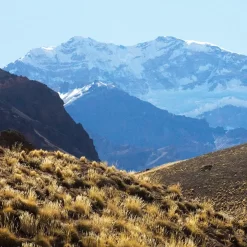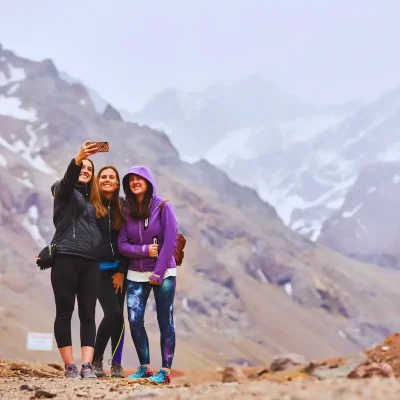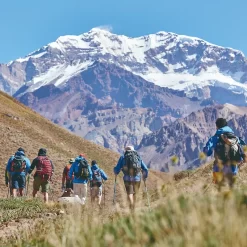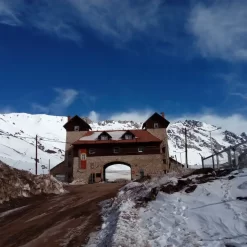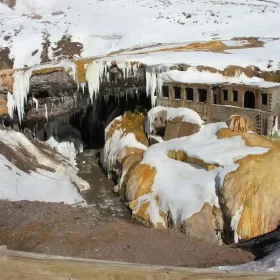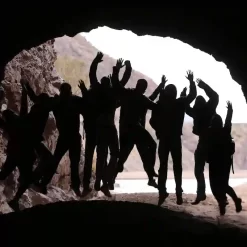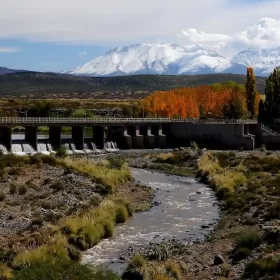Traveling to Mendoza is not just the beginning of a journey through vineyards and mountains—it’s also a logistical decision: plane, car, bus, or train? In this detailed guide, you’ll find all the available options to understand how to travel to Mendoza from Buenos Aires, Chile, or other major cities in Argentina, including estimated costs, key seasonal tips, and practical advice to make the most of your trip from the very first kilometer.
How to Travel to Mendoza from Buenos Aires
Flights from Buenos Aires to Mendoza: Speed and Comfort
The fastest and most comfortable way to travel to Mendoza from Buenos Aires is by plane. Aerolíneas Argentinas and JetSmart operate daily flights from Aeroparque Jorge Newbery (AEP) and Ezeiza (EZE) to El Plumerillo International Airport (MDZ) in Mendoza.
- Frequency: More than 6 daily flights
- Estimated cost: USD 70 to 150 one-way, depending on the season and advance purchase
- Tip: Book at least 30 days in advance if you plan to travel during the grape harvest in March or the winter holidays
Traveling to Mendoza by Bus from Buenos Aires
A more affordable alternative is the long-distance bus. Companies like Andesmar, CATA Internacional, Chevallier, and Via Tac offer daily services from Retiro Bus Terminal.
- Travel time: 13 to 15 hours
- Estimated cost: USD 40 to 70 per leg
- Onboard services: Reclining seats, hot meals, entertainment, and restrooms

How to Travel to Mendoza by Car from Buenos Aires
If you prefer to drive, the most direct route is National Route 7. The journey from Buenos Aires to Mendoza covers approximately 1,050 km, crossing Buenos Aires, Santa Fe, Córdoba, and San Luis provinces.
- Estimated driving time: 11 to 13 hours without stops
- Fuel consumption: 80 to 90 liters (USD 90 to 100 depending on the vehicle)
- Tolls: USD 15 to 20
- Parking in Mendoza: Metered downtown parking (USD 0.50/hour) or private garages (USD 5 to 10 per day)
Traveling to Mendoza from Santiago, Chile or Other Chilean Cities
Flights from Santiago to Mendoza: Fast and Scenic
From Santiago Airport (SCL), airlines like LATAM, Sky Airline, and JetSmart offer regular flights to Mendoza. The flight crosses the Andes and lasts just 50 minutes.
- Frequency: 3 to 5 daily flights
- Estimated cost: USD 80 to 160 one-way
Traveling from Santiago to Mendoza by Bus: A Scenic Journey
Companies such as Turbus, CATA Internacional, and Andesmar operate this route daily, with both morning and night departures.
- Duration: 6 to 9 hours (depending on the conditions at Paso Los Libertadores)
- Estimated cost: USD 35 to 60
- Important tip: In winter (June–August), the mountain pass may close due to snow—always check road status before departure

Traveling to Mendoza from Chile by Car
A scenic option for those who enjoy driving. From Santiago, it’s 370 km along Route 60 (CL) and then National Route 7 (ARG), crossing through the Cristo Redentor Pass.
- Driving time: 5 to 6 hours without delays
- Requirements: International insurance (SOAPEX), snow chains in winter, vehicle documentation, Chilean RUT
- Warning: The pass may close due to extreme weather from May to September. In winter, especially from June to August, snow can cause sudden closures and long delays at border controls. Always check the updated status of the pass and have a backup plan if you intend to cross during these months.
Other Road Routes: Traveling to Mendoza from Rosario, Córdoba, and More
Traveling from Rosario to Mendoza
From Rosario, it’s 850 km along National Route 33 and then RN7. It’s a great opportunity to stop in San Luis or Córdoba along the way.
- Driving time: About 10 hours
- Fuel cost: Around USD 75
- Tolls: USD 10 to 15
- By bus: 12 to 14 hours (USD 40–60), operated by FlechaBus, Urquiza, and others
Enjoy the best of the Andes in Mendoza
Traveling to Mendoza from Other Argentine Cities
There are also frequent ground and air connections from cities like Córdoba, San Juan, Neuquén, and Bariloche. Buses are popular during peak seasons, especially for younger or budget travelers.
If you plan to drive, consider National Route 40, Argentina’s most iconic road. This legendary route stretches from north to south along the Andes, passing through villages like Uspallata, Pareditas, and El Nihuil. It’s ideal for those who want to experience Mendoza’s high-altitude vineyards, snow-fed rivers, and colorful mountain landscapes.
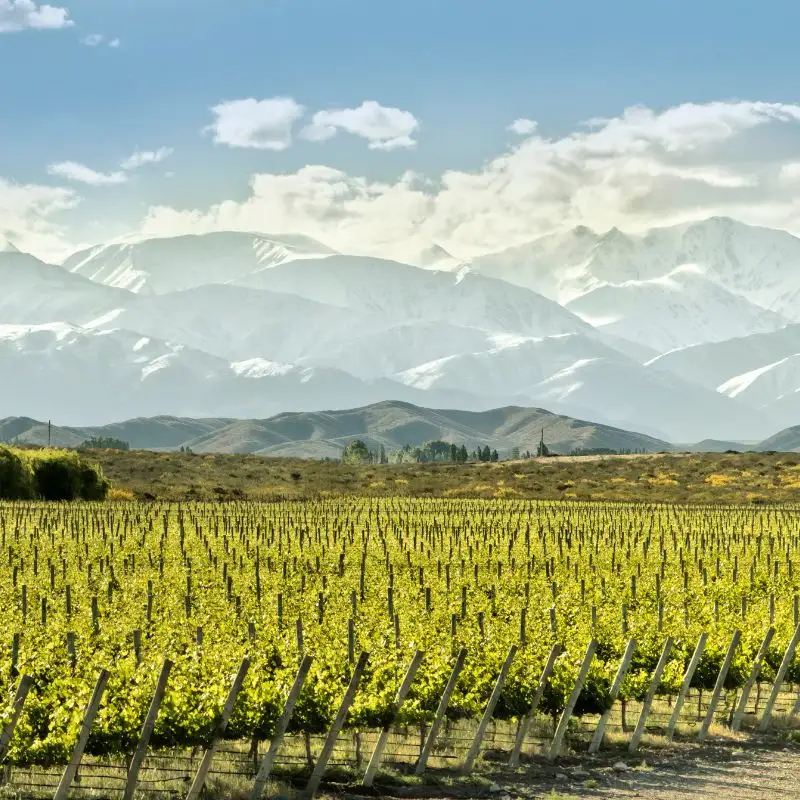
Traveling to Mendoza by Train: Is It Possible?
There is no direct train to Mendoza from Buenos Aires. The long-distance train currently ends in Justo Daract (San Luis), about 350 km from Mendoza. You must continue by bus from there.
- Total cost (train + bus): Around USD 25
- Disadvantages: Very slow (up to 24 hours) and connections may not align well
- Conclusion: Recommended only for those looking for a unique experience and with plenty of time
How to Fly to Mendoza from Abroad
Mendoza has direct international flights from Santiago de Chile, São Paulo, and Panama (seasonal or regular depending on demand). For destinations like the U.S., Europe, or Australia, it’s best to connect via Buenos Aires or Santiago.
- Airlines: Aerolíneas Argentinas, LATAM, Copa Airlines
- Frequency: Daily or intermittent depending on route
- Estimated price from the U.S.: From USD 900 (via Buenos Aires or Santiago)
- Tip: If visiting multiple regions in Argentina, it’s often best to enter via Buenos Aires and fly to Mendoza
Renting a Car in Mendoza: Costs and Tips
You’ll find many rental agencies at the airport and in downtown Mendoza (Hertz, Avis, Localiza, Cuyo Rent a Car).
- Daily cost: From USD 45 (economy car) to USD 120 (SUV or 4×4)
- Requirements: Valid license and credit card
- Benefits: Great for visiting remote wineries or regions like Uco Valley or Cañón del Atuel
However, if you plan to drink wine, it’s best to book a private transfer service like the ones offered by SAK Wine & Travel. We provide high-end vehicles and professional drivers, so you can enjoy the day worry-free and without navigating. Plus, their expert guides know the region inside and out.
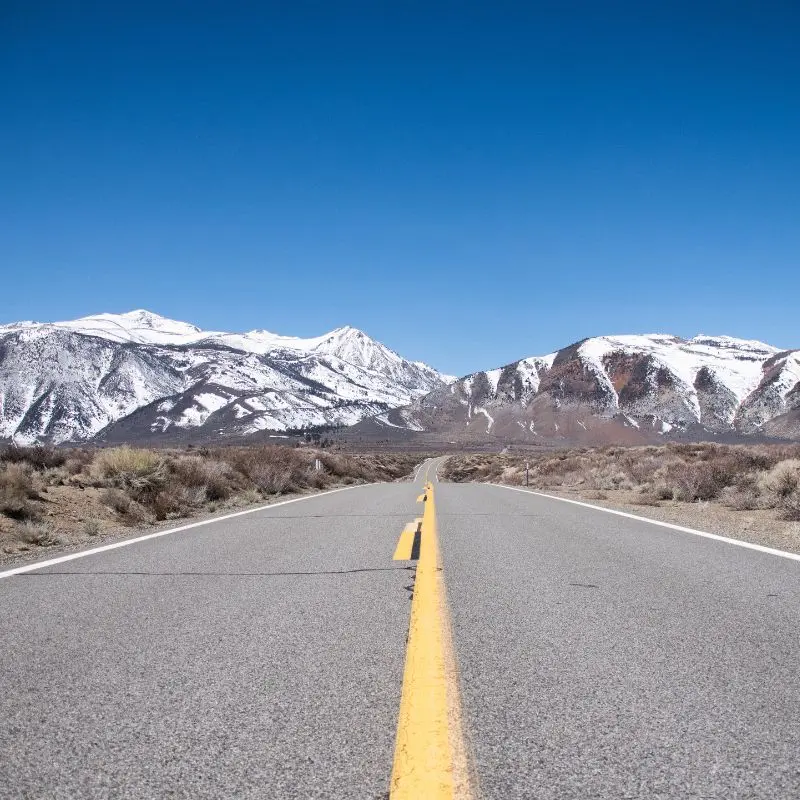
When to Travel to Mendoza: Climate, Roads, and Tips
- Spring & Fall (Sept–Nov / Mar–May): Mild weather, ideal for vineyard visits and outdoor activities
- Summer (Dec–Feb): Long days, high temps, great for adventure trips
- Winter (Jun–Aug): Snow season in the Andes—but beware: the Cristo Redentor Pass may close due to snow
Key tip: Always check road and border conditions if traveling by land, especially in winter or after heavy rain.
Final Comparison Table: Best Travel Methods by Origin and Traveler Type
| Transportation Method | Ideal for… | Approx. Travel Time | Estimated Cost (USD) | Pros | Cons |
|---|---|---|---|---|---|
| Flight from Buenos Aires | Time-sensitive travelers | 1h50 | 70–150 | Fast, comfortable, many daily options | Prices rise in high season |
| Bus from Buenos Aires | Budget-conscious travelers | 13–15 hrs | 40–70 | Affordable, onboard amenities, no driving | Long duration |
| Car from Buenos Aires | Families, groups, roadtrip lovers | 11–13 hrs | 120–150 | Scenic route, flexible, roadside stops | Tolls, fatigue, parking |
| Flight from Santiago | International travelers with little time | 50 min | 80–160 | Quick Andes crossing, stunning aerial views | Fewer flights than from Buenos Aires |
| Bus from Santiago | Landscape lovers | 6–9 hrs | 35–60 | Affordable, breathtaking views | Border delays possible |
| Car from Santiago | Experienced drivers | 5–6 hrs | 50–80 | Freedom, scenic detours | Risk of pass closure in winter, border procedures |
| Train + bus from Bs. As. | Curious and slow-paced travelers | 20–24 hrs (combined) | 25–30 | Unique, alternative route | Slow, inconvenient connections |
| Car from Rosario/Córdoba | Intermediate travelers | 9–11 hrs | 80–120 | Great connectivity, explore Route 40 | Requires planning, fuel and toll costs |
Want help planning your trip with private transfers, lodging, and winery visits? Explore SAK Wine & Travel’s private and semi-private tours and experience Mendoza with ease and comfort.

Paula is a travel communications specialist with solid expertise in wine tourism and adventure travel in her native Mendoza. She combines a background in audience analysis with a deep understanding of today’s travelers to craft effective, user-centered, and sustainable content strategies. Her approach blends creativity, data, and a strong commitment to the responsible development of tourism in Argentina.




